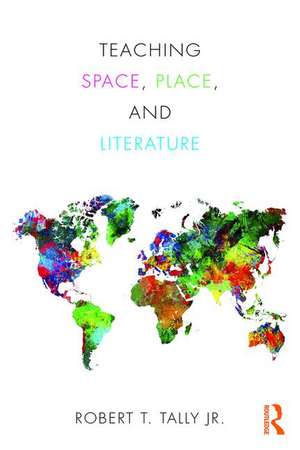Teaching Space, Place, and Literature
Editat de Robert Tally Jr.en Limba Engleză Paperback – 2 noi 2017
| Toate formatele și edițiile | Preț | Express |
|---|---|---|
| Paperback (1) | 364.94 lei 6-8 săpt. | |
| Taylor & Francis – 2 noi 2017 | 364.94 lei 6-8 săpt. | |
| Hardback (1) | 1000.27 lei 6-8 săpt. | |
| Taylor & Francis – 31 oct 2017 | 1000.27 lei 6-8 săpt. |
Preț: 364.94 lei
Nou
Puncte Express: 547
Preț estimativ în valută:
69.84€ • 72.72$ • 59.02£
69.84€ • 72.72$ • 59.02£
Carte tipărită la comandă
Livrare economică 08-22 martie
Preluare comenzi: 021 569.72.76
Specificații
ISBN-13: 9781138047037
ISBN-10: 1138047031
Pagini: 250
Dimensiuni: 156 x 234 x 17 mm
Greutate: 0.34 kg
Ediția:1
Editura: Taylor & Francis
Colecția Routledge
Locul publicării:Oxford, United Kingdom
ISBN-10: 1138047031
Pagini: 250
Dimensiuni: 156 x 234 x 17 mm
Greutate: 0.34 kg
Ediția:1
Editura: Taylor & Francis
Colecția Routledge
Locul publicării:Oxford, United Kingdom
Public țintă
Postgraduate and UndergraduateCuprins
Introduction: The Map and the Study of Literature Part 1. Key Concepts and Issues Introduction 1. Space Odyssey: From Place to Lived Space, Gerard van den Heever 2. The Nomadic Classroom: Encountering Literary Art through Affective Learning, Christian Beck 3. An Interdisciplinary Pedagogy for a Graduate Course in Spatial Studies, Jordan Hill 4. Mapping Multiethnic Texts in the Literary Classroom: GIS and Karen Tei Yamashita’s Tropic of Orange, Anastasia Lin 5. Teaching Literary Cartographies of Race, Space, Place, and Displacement, Jessica Maucione 6. "Out of Doors": Shakespeare and the Forest School Movement, Lynsey McCulloch 7. Teaching Victorian Literature through Cartography, Susan E. Cook 8. Thinking Geocritically: Teaching Canadian Literature in Treaty 6 Territory, Sarah Wylie Krotz Part 2. Representing Space and Place 9. Panoramic Perspectives and City Rambles: Teaching Urban Literary Studies, Lieven Ameel 10. Modeling Interdisciplinarity: Spaces of Modern Paris through Literature and Design, Andrea Goulet and Eugenie L. Birch 11. From Ashes to Phoenix: A Geocritical Approach to Teaching the Literary Landscapes of Eighteenth-Century London, Catharina Loeffler 12. Interrogating the Urban Crisis: Teaching Detroit in Literature, Frank D. Rashid 13. Place as Palimpsest: Literary Works and Cultural-Political Resistance, Andrea Quaid 14. Space, Place, and Gender: Women and Geography in the American Literature Survey, Geneva M. Gano 15. "But wither am I wandering?": Gender, Class, and Writing Space in Mary Wollstonecraft’s Letters Written During a Short Residence in Sweden, Norway, and Denmark, Kathryn Walchester Part 3. Critical Domains 16. Space and Place in Fictional Storyworlds, Mihai Mindra 17. Space, Movement, and Modern Literature, Scott Cohen 18. Literature and the Medieval English "Borderland": Teaching the Culture of Identity and Place, Ruth Oldman 19. Teaching the Importance of Space and Place: Robert Stepto’s "Ritual Grounds", Wendy Rountree 20. Multiple Identities and Imaginative Spatiality in Kipling’s Kim and Rushdie’s Midnight’s Children, Safia Sahli Rejeb 21. Teaching Non-Places in British Children’s Fantasy Literature, Hannah Swamidoss 22. Key Concepts and the Thriller: Space, Place, and Mapping, Ralph Crane, Lisa Fletcher, and Elizabeth Leane
Descriere
Teaching Space, Place, and Literature surveys a broad expanse of literary critical, theoretical, historical territories, as it presents both an introduction to teaching spatial literary studies and an essential guide to scholarly research.
